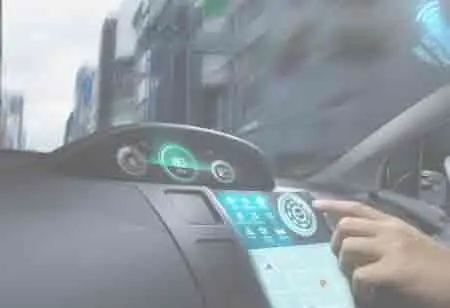THANK YOU FOR SUBSCRIBING
THANK YOU FOR SUBSCRIBING
Be first to read the latest tech news, Industry Leader's Insights, and CIO interviews of medium and large enterprises exclusively from Auto Tech Outlook

By
Auto Tech Outlook | Thursday, October 07, 2021
Stay ahead of the industry with exclusive feature stories on the top companies, expert insights and the latest news delivered straight to your inbox. Subscribe today.
The demand for autonomous vehicles increases because of their diversified features like adaptive cruise control and environmental monitoring.
FREMONT, CA: Over the last few years, autonomous vehicle levels for driving have become increasingly diverse, with features such as adaptive cruise control, environment monitoring, and other sophisticated driver aid systems becoming more popular. As a result, autonomous driving technologies may now be measured on a scale.
The automobile companies must ensure that the automotive embedded software is safe, secure, and dependable at every level of an autonomous vehicle for driving. Using a static code analyzer to enforce automotive coding requirements and functional safety standards is the most accessible and convenient approach to accomplish this objective.
With a static code analyzer, companies may use coding rules to ensure that the code fulfills the appropriate safety standards, irrespective of the autonomous driving level.
What are the Autonomous Vehicle Levels for Driving?
Levels of autonomous vehicle driving are defined by the Society of Automotive Engineers (SAE) and range from Level 0 (totally manual) to Level 5 (completely autonomous).
No Driving Automation
Many vehicles on the road today are manual, making them level 0. In such vehicles, the driver is in charge of every real-time function necessary to operate the car. At this level, some automatic features are in place to assist the driver, such as an emergency braking system and normal cruise control.
Driver Assistance
While most automobiles on the road are manual, several newer models include automated driving assistance technologies like adaptive cruise control and lane control assist. These characteristics contribute to the car's and driver's overall safety. The driver retains control of most of the essential driving operations, including steering and braking.
Partial Automation
A prominent aspect of level 2 is advanced driver assistance systems (ADAS). Such cars can brake, accelerate, and take over steering on their own. These are not autonomous vehicles, as the driver retains control and must always keep an eye on the road.
Conditional Automation
A level 3 car can drive itself using an automated driving system (ADS), but only in particular circumstances. While these aren't entirely autonomous vehicles, they can go great distances on highways by themselves. Both hands on the wheel is not necessary at this level, but the driver should be prepared to regain control of the situation changes.
High Automation
Cars can function in a self-driving mode, but it does not mean they are entirely autonomous. Instead, it means that the car can handle most driving conditions without the driver's input, even in complicated circumstances. At level 4, a driver can be in-charge of the automobile and reject the self-driving mode.
Full Automation
This level is related to fully autonomous vehicles, managing every driving duty in all road conditions. There is no need for a driver at this level.
See Also: Top Automotive Solution Companies
 Copyright © 2025 AutoTech Outlook. All Rights Reserved | Privacy Policy | Subscribe | Sitemap | About us | Feedback Policy | Editorial Policy
Copyright © 2025 AutoTech Outlook. All Rights Reserved | Privacy Policy | Subscribe | Sitemap | About us | Feedback Policy | Editorial Policy 



